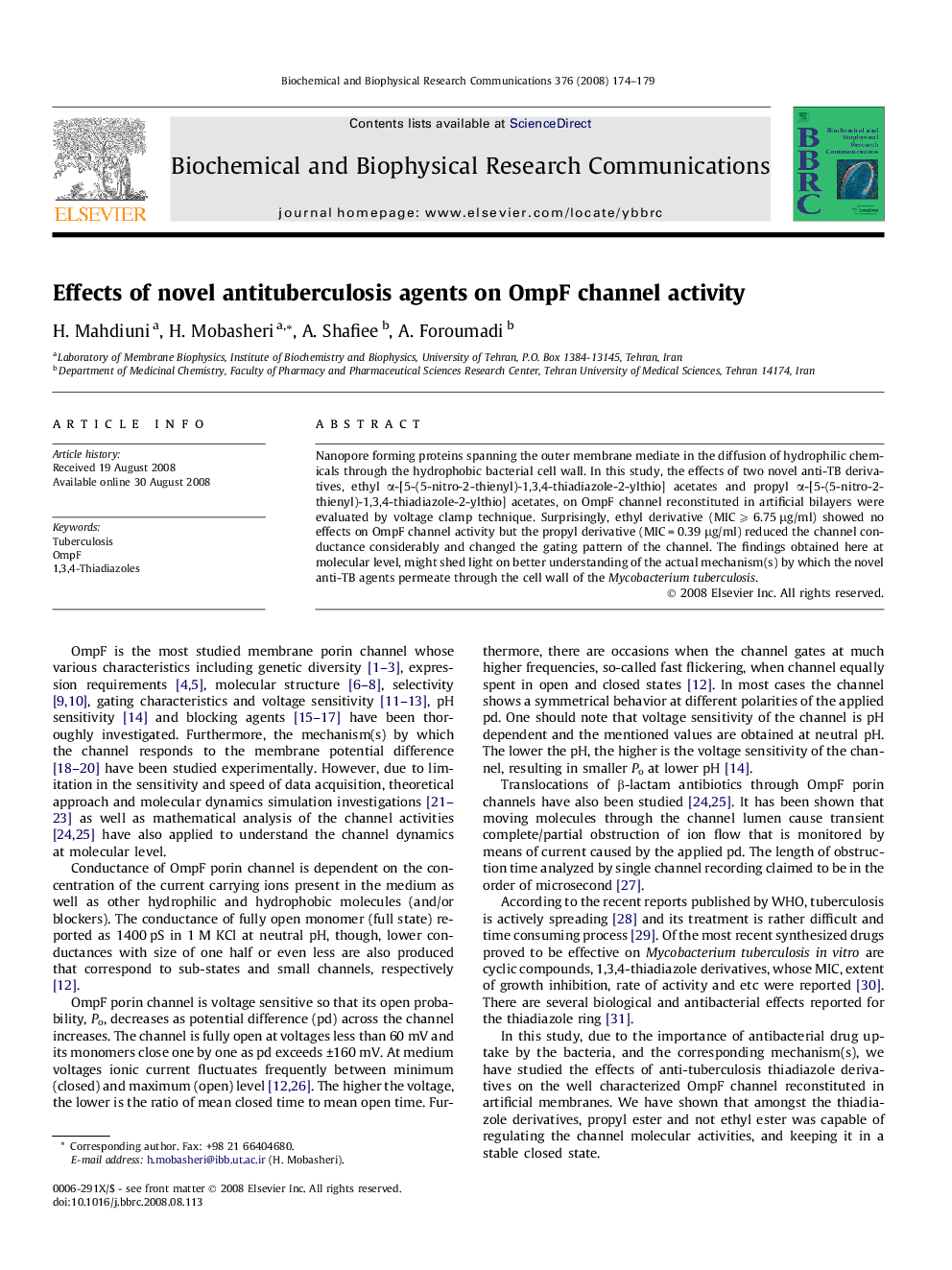| Article ID | Journal | Published Year | Pages | File Type |
|---|---|---|---|---|
| 1934316 | Biochemical and Biophysical Research Communications | 2008 | 6 Pages |
Nanopore forming proteins spanning the outer membrane mediate in the diffusion of hydrophilic chemicals through the hydrophobic bacterial cell wall. In this study, the effects of two novel anti-TB derivatives, ethyl α-[5-(5-nitro-2-thienyl)-1,3,4-thiadiazole-2-ylthio] acetates and propyl α-[5-(5-nitro-2-thienyl)-1,3,4-thiadiazole-2-ylthio] acetates, on OmpF channel reconstituted in artificial bilayers were evaluated by voltage clamp technique. Surprisingly, ethyl derivative (MIC ⩾ 6.75 μg/ml) showed no effects on OmpF channel activity but the propyl derivative (MIC = 0.39 μg/ml) reduced the channel conductance considerably and changed the gating pattern of the channel. The findings obtained here at molecular level, might shed light on better understanding of the actual mechanism(s) by which the novel anti-TB agents permeate through the cell wall of the Mycobacterium tuberculosis.
